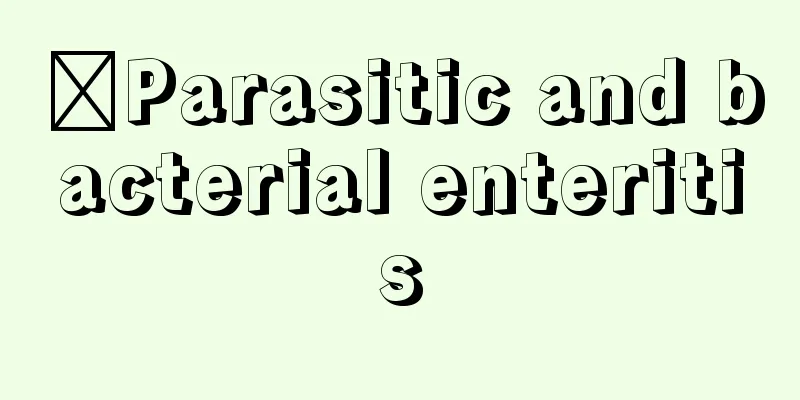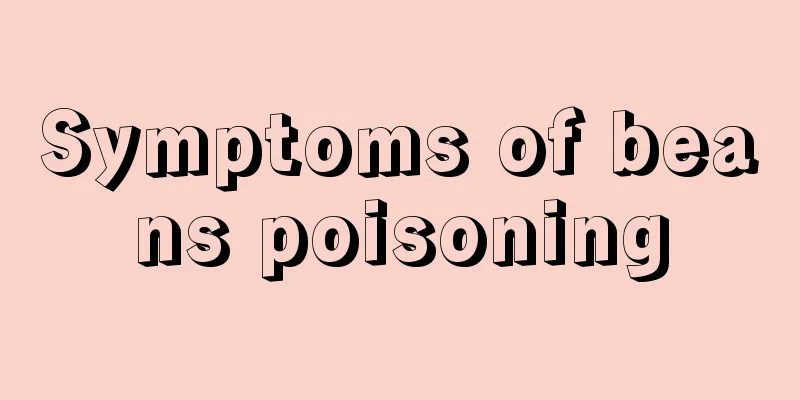Parasitic and bacterial enteritis

|
Both parasites and bacteria can easily cause enteritis, and we know that enteritis is a relatively serious intestinal disease. There are many causes. In addition to parasites and bacteria, fungi and viruses may also cause this symptom. Clinically, it often causes abdominal pain and diarrhea in patients. Severe cases may also cause mucous pus in the stool. Some patients may also have fever. There are also certain differences in the treatment methods for parasitic and bacterial enteritis. Parasitic enteritis Parasitic enteritis includes enteritis caused by flagellates, coccidia, toxoplasma, ascaris, hookworms, etc. Among the enteritis caused by parasites, Entamoeba histolytica is the most common. It is recommended to take 2 tablets of intestinal worm clearing tablets orally for treatment. And in the future, pay attention to food hygiene and hand hygiene. Bacterial enteritis Bacterial enteritis includes enteritis caused by Escherichia coli, Salmonella, Yersinia (causing enterocolitis), Bacillus sporogenes, Campylobacter jejuni, Clostridium (canine hemorrhagic gastroenteritis), etc. The most common pathogenic bacteria of bacterial enteritis is Shigella dysenteriae, followed by Campylobacter jejuni and Salmonella. Clinical manifestations 1. Acute enteritis In my country, the incidence rate is higher in summer and autumn, with no gender difference. The general incubation period is 12 to 36 hours. Nausea, vomiting and diarrhea are the main symptoms of acute enteritis. 2. Chronic enteritis The clinical manifestations are long-term chronic or recurrent abdominal pain, diarrhea, indigestion, etc. In severe cases, there may be mucus or watery stools. The severity of diarrhea varies. In mild cases, patients may have bowel movements 3 to 4 times a day, or diarrhea and constipation may occur alternately; in severe cases, patients may have bowel movements every 1 to 2 hours, and may even suffer from fecal incontinence. Some patients may have nocturnal diarrhea and/or postprandial diarrhea. When the rectum is severely affected, a feeling of tenesmus may occur. The feces are mostly paste-like, mixed with a large amount of mucus, and often contain pus and blood. Some patients have fresh blood in their stools, and the lesions are limited to the rectum, which is called hemorrhagic proctitis. The blood or stool is discharged separately, or attached to the surface of normal or dry stool, which is often mistaken for hemorrhoidal bleeding. Patients with proctitis often have mucus and blood in their stools, and may even suffer from fecal incontinence. If the lesions extend above the rectum, blood is often mixed with the stool or bloody diarrhea occurs. Physical examination may reveal mild tenderness around the umbilicus or lower abdomen, hyperactive bowel sounds, and rectal prolapse. Treatment 1. Pathogen treatment Viral enteritis generally does not require pathogen treatment and can heal on its own. For bacterial enteritis, it is best to select antibiotics based on the results of bacterial drug sensitivity tests. When suffering from bacillary dysentery, because Shigella dysenteriae is widely resistant to commonly used antibiotics, the generally used drugs are co-trimoxazole (cotrimoxazole), pipemidic acid, gentamicin, amikacin, etc. Campylobacter jejuni enteritis can be treated with erythromycin, gentamicin, chloramphenicol, etc. Yersinia enterocolitica enteritis is generally treated with gentamicin, kanamycin, co-sulfamethoxazole, tetracycline, chloramphenicol, etc. Patients with mild Salmonella enteritis may not need antibiotics, while patients with severe cases can use chloramphenicol or trimethoprim-sulfamethoxazole. Invasive Escherichia coli enteritis can be treated with neomycin, colistin and gentamicin with good results. Amebic dysentery, enteritis caused by Giardia lamblia, and Trichomonas can be treated with metronidazole (Flagyl). Schistosomiasis can be treated with praziquantel. Oral nystatin is effective in treating Candida albicans enteritis. Patients with systemic fungal infection need to be treated with amphotericin B. 2. Symptomatic treatment Replenish fluids and correct electrolyte and acidosis. For those who are mildly dehydrated and do not vomit severely, oral rehydration can be given. The WHO-recommended oral rehydration formula is sodium chloride, sodium bicarbonate, potassium chloride, glucose or sucrose, plus water. For patients with severe dehydration or vomiting, normal saline, isotonic sodium bicarbonate and potassium chloride solutions, and glucose can be given intravenously. Drugs that reduce intestinal motility and secretion. Atropine, belladonna, and propantheline can be used in small amounts to reduce intestinal motility, relieve pain, and stop diarrhea. Chlorpromazine can also be used. It has a sedative effect and can inhibit excessive secretion of intestinal mucosa caused by enterotoxins, thereby reducing the frequency and amount of bowel movements. |
<<: Nutritional value of young cicada monkey
>>: The efficacy and function of Yinlingquan
Recommend
Three common signs of cervicitis How to care for patients with cervicitis that has become cancerous
Cervical cancer is one of the most common maligna...
Will desensitization treatment have side effects?
Allergic diseases cause great physical and mental...
Is it better to lock the trekking pole internally or externally?
Mountaineering is currently a very popular outdoo...
Can I blow dry my hair if I have chickenpox
Chickenpox is a common infant disease, which is m...
Introducing the must-know measures to prevent rectal cancer
As a high incidence disease in recent years, rect...
Why do I need chemotherapy before surgery for ovarian cancer?
With the progress of the times, people's livi...
How to take care of frizzy wig
There are many people around us who are bald due ...
What is the best way to treat small cell lung cancer
Because patients with small cell lung cancer are ...
Tips for preventing prostate cancer
The incidence of prostate cancer is gradually inc...
How to eat dark chocolate to lose weight
Dark chocolate is a relatively pure type of choco...
What are the clinical symptoms of sciatica?
Sciatica is an orthopedic disease. When it occurs...
Introduction to the interventional drug pirarubicin for liver cancer? Pay attention to these points
There are many ways to treat liver cancer. Interv...
How to prevent small cell lung cancer in daily life
People think that with the development of medicin...
Do I need to wash my face after applying vitamin E?
In autumn and winter, the weather is very dry, so...
Can cervical cancer be cured? What are the treatments for cervical cancer?
Cervical cancer cannot be completely cured, but a...









